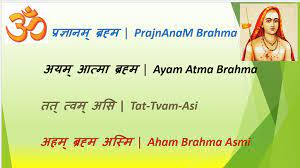The Pasupatabrahma Upanishad (The Mysteries of the Divine Supreme Being)
The Pasupatabrahma Upanishad (The Mysteries of the Divine Supreme Being) The Pasupata Brahmana Upanishad, one of the 31 minor Upanishadic texts associated with the Atharva Veda, is classified as one of the 20 Yoga Upanishads. The Upanishad presents profound insights into the nature of the divine and its connection to human consciousness. Its name “Pasupatabrahma,” signifies the combination of the divine aspects of Pashupati (Lord of all beings) and Brahman (the ultimate reality). Its exact date of composition remains uncertain but it is believed to be emerged between the 9th and 13th centuries AD. It offers a unique perspective on the divine principle of Pasupatabrahma, often associated with Lord Shiva. The text is structured in two khanda (sections). The opening verses are in the form of questions addressed to Hindu creator god Brahma by his son Vaishravana. Then the text discusses soul as Hamsa, yoga, meditation, the uselessness of external rituals and the need...























